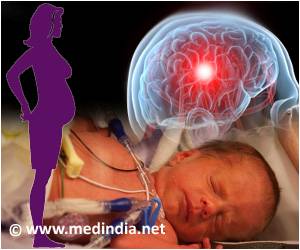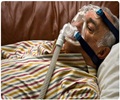The Penn-led team will search for common pathological changes in the post-mortem brains of over 200 patients with a history of traumatic brain injury.

‘Chronic traumatic encephalopathy is a progressive neurodegenerative disease that afflicts the brains of people who have primarily suffered repeated concussions and a severe brain injury.’





Research activities will include identifying proteins that show evidence of neurodegenerative damage; documenting gross anatomical changes such as brain atrophy; and uncovering underlying biochemical and genetic alterations. "We want to see which pathological changes consistently occur in CTE and assess whether they are similar to or different than those in other major neurodegenerative diseases," said co-lead researcher Douglas Smith, MD, the Robert A. Groff Professor of Teaching and Research in Neurosurgery at Penn and director of the Penn Center for Brain Injury and Repair.
CTE is a progressive neurodegenerative disease that afflicts the brains of people who have primarily suffered repeated concussions, such as athletes who take part in contact sports, and in some individuals with a history of a single severe traumatic brain injury.
Symptoms of CTE are comparable to other neurodegenerative conditions such as Alzheimer's disease and include memory loss, confusion, depression and difficulty paying attention and organizing thoughts. However, it remains unknown how the neuropathological changes associated with CTE affect these symptoms. In addition, an authoritative diagnosis of CTE can only be made after death, when an autopsy can determine whether brain changes currently tied to CTE are present.
"Despite strong current interest in CTE, there have been surprisingly few cases reported and there are no validated neuropathological diagnostic criteria to define it as a distinct disease," Smith said. "Nonetheless, there is a widely held, but to date unsupported, perception that repetitive traumatic brain injury alone culminates in CTE."
Advertisement
"In some parts of the CTE-affected brain there is a build-up of tau protein, which normally stabilizes cellular structure in the neurons. But when tangled and twisted, this can cause major malfunctioning of the neurons," said co-lead researcher John Q. Trojanowski, MD, PhD, William Maul Measey-Truman G. Schnabel, Jr., MD Professor of Geriatric Medicine and Gerontology in the department of Pathology and Laboratory Medicine and director of Penn's Institute on Aging as well as the NIH funded Alzheimer's Center.
Advertisement
These include brain atrophy, occurrence of beta-amyloid, another protein found in Alzheimer's patients; pathologies of the TDP-43 protein (which have been found in 97 percent of people with amyotrophic lateral sclerosis or "Lou Gehrig's disease"); and neuroinflammation.
"As traumatic brain injury-associated neurodegeneration has become a major health concern, there is a clear need to develop verifiable neuropathological criteria for diagnosis, which will in turn be crucial to the success of future diagnostic tests and possible screening and treatment efforts," Trojanowski said.
In addition to an absence of validated clinical or neuropathological diagnostic criteria for CTE, it is not known how its associated neurodegeneration occurs. "Therefore," said Smith, "we want to outline a potential mechanistic basis of traumatic brain injury-induced neurodegeneration by examining the temporal course and potential contribution of inflammatory changes following traumatic brain injury."
Source-Newswise















